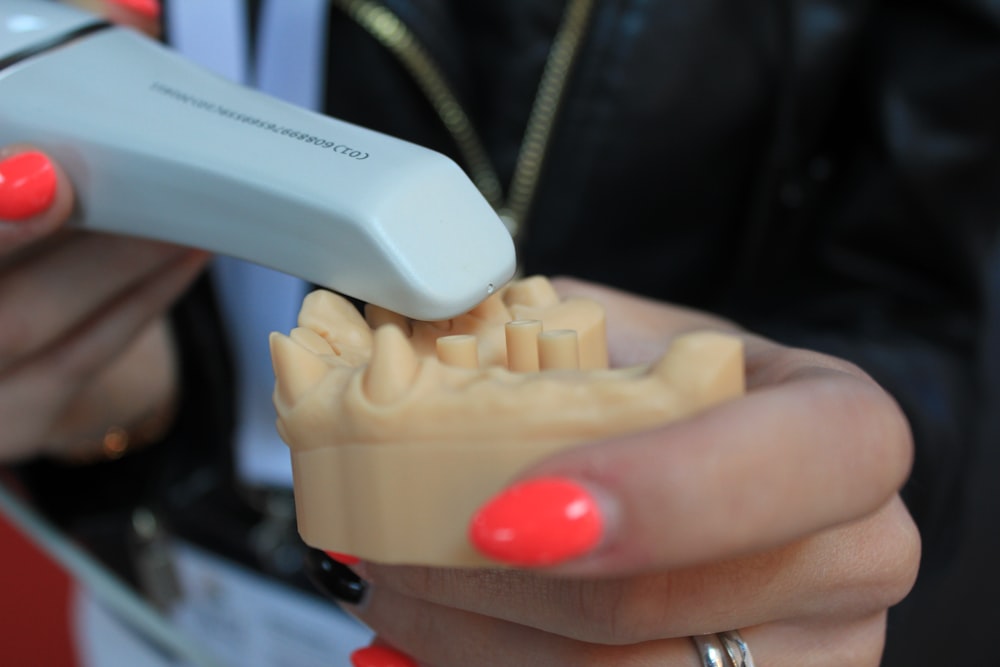Braces are small plates that are attached to the teeth using special glue and are connected to each other using a metal arc. This wire has a “shape memory” and, exerting uniform pressure on the teeth, returns them to the correct position.
Braces are:
- Metal: They are the most affordable (from 60 thousand rubles with treatment for both jaws), but they are not inferior in quality to other types. Their only minus is the appearance. But they provide minimal friction between the arc and the groove and cope with alignment a little faster (usually it takes a year and a half, less often two).
- Ceramic: These are completely aesthetic solutions that cost more than metal ones (from 80 thousand rubles with treatment for both jaws). Stealth is achieved due to the ability of the brackets to accept the color of the underlying enamel and not to glare in the light. Today, there are advanced versions: miniature, durable, made of fine-grained ceramics of a new generation. They are resistant to staining, so you can expand your eating habits. The main advantage of the ceramic system – durability – is especially relevant when removed at the end of treatment. Such a bracket is less likely to suddenly crumble and, most likely, it will not need to be cut off the tooth, unlike sapphire.
One of the advantages of Clarity Advanced ceramic brackets, which are extremely popular among patients, is that they are made using the innovative Flash Free technology, which additionally protects the enamel from the effects of caries acid. Thanks to the vertical groove on the back, such braces are removed more predictably without crumbling or deforming.
- Sapphire: Transparent, durable (but not the same as ceramic ones), are not stained, however, they are best suited for those with lighter teeth (they will be noticeable with darker ones, in this case ceramic ones should be chosen). Highlighted brightly glare in the light, including neon. The friction between the groove and the arc is also high, so the alignment process is slightly slower than when wearing metal. Are more expensive than ceramic.
- Lingual: Completely invisible because they are mounted on the inside of the teeth. Can be made of gold or base alloy. The first is preferable, since the brackets made of gold will not oxidize in the mouth and the treatment will be faster and more comfortable. The disadvantages include the need to find a qualified specialist, a slightly more complicated installation and a high price (from 250 thousand rubles for a full course of treatment on two dentition’s).
In addition, during the first days after installation, there may be changes in diction associated with the adaptation of the language. Caring for lingual braces will be more difficult. - Ligatureless: Their difference from the classic bracket systems is the presence of a clip or “door” that holds the arc. There are no ligatures here, so care for such braces is easier, but the braces themselves are noticeably more cumbersome. The effectiveness of such systems is identical to the ligature ones. Cost – from 80 thousand rubles for both dentition’s with treatment.
Ways to align teeth without braces
Modern medicine does not stand still but cosmetic dentistry Los Angeles offers a huge number of other non-surgical methods for aligning teeth and the most common is Veneers. These are tooth pads, small plastics 0.5-0.7 mm thick, the main task of which is to improve the aesthetic appeal of a smile. For example, if the teeth are yellowish or there are chips, bumps, one tooth is longer than the other, there are gaps between the teeth, then veneers will easily hide these imperfections. That is, physically, veneers do not correct the bite, they only mask defects! About two weeks pass from the moment of taking the impression to installing the veneers – and a dazzling smile is ready! It is important!
Veneers have another big drawback: when installing them, tooth enamel is highly grinded, so if you decide to remove them, you will have to spend time, effort and money on its restoration.
An alternative to veneers is luminaries. They give about the same effect, but do not grind the enamel, so they can be removed at any time. Luminaries are much thinner and therefore cannot be used to mask serious flaws.


